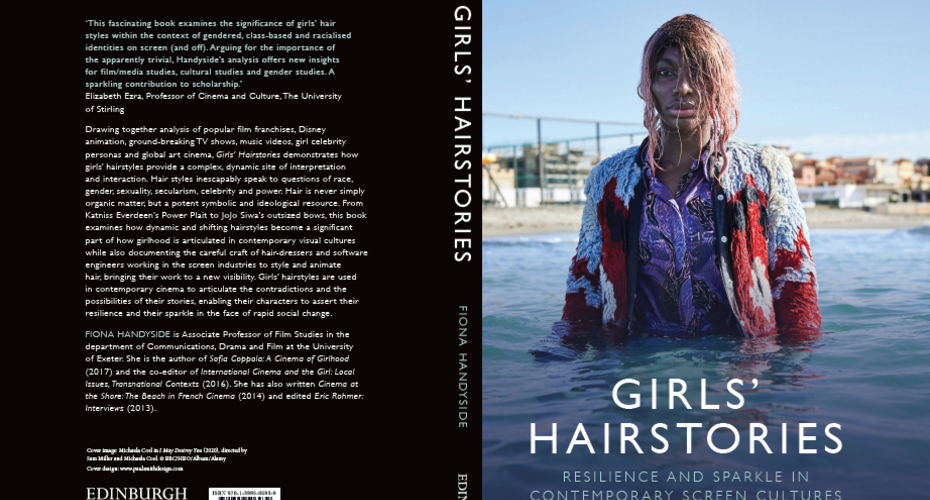New book explores what Hollywood hair says about girl power

The relationship between hairstyles in popular screen and music culture and girlhood has been explored in a new book from a film scholar at the University of Exeter.
From Elsa’s plait in Frozen to Emma Watson’s pixie haircut post-Harry Potter, Girls’ Hairstories: Sparkle and Resilience in Contemporary Screen Cultures is the first study to examine the myriad ways in which hair can symbolise deeper issues such as gender, race and religion.
Written by Dr Fiona Handyside, Girls’ Hairstories includes interviews with professional hair artists who work on film sets and software engineers at Disney Pixar who created the algorithm that animated the hair in Frozen.
The book also considers the use of hair accessories, such as the bows made famous by singer JoJo Siwa – and subsequently banned by numerous schools in the UK.
“Hair is an important vehicle for filmmakers to communicate character traits to their audiences,” said Dr Handyside, of Exeter’s Department of Communications, Drama and Film. “Whether it is the 21st century ideal of Katniss Everdeen’s or Elsa from Frozen’s ‘battle plaits’, or the rebelliousness of red and short hair, or the controversy concerning covering hair with a veil, it’s become a fascinating way to signify difference – and different expressions of ‘girlishness’.”
Dr Handyside is an expert in feminist film theory and has been conducting research in the field of ‘girlhood studies’ for more than a decade. Her decision to write a book on hair was influenced by her interest in how qualities of resilience were being expressed, following the 2008 economic downturn, and how they were being realised on-screen.
“I began to notice, as I was speaking on this topic, that hair and hairstyles in film, television and music video were becoming very interesting,” she said. “So, I would include some of these observations in my presentations, and then all anyone wanted to ask questions about was the hair! So, this project has come out of left field to some extent, but then that is often the case with the most interesting research projects!”
With funding from a prestigious Leverhulme International Research Fellowship, Dr Handyside visited numerous archives, as well as the Hair exhibition at the Horniman Museum in London. She interviewed Hollywood, UK and French hairstylists, including Aubrey Marie, who created Saoirse Ronan’s streaky dyed straggle in LadyBird (Gerwig, 2017), and Bethany Swan, who worked on the range of hairstyles sported by Michaela Coel in I May Destroy You (BBC/HBO, 2020). She also spoke to anthropologists and the Disney software engineers who created Tonic, which animates the 500,000 strands of Elsa’s hair – five times the amount of the average person
Over its six chapters, the book considers a range of topics, including the significance of red hair and how around 17% of leading female characters in movies and TV shows are redheads, compared to just 1% of the population, and the increasing representation of ‘natural’ Black hair on screen. It explores how Audrey Hepburn’s short hair in Roman Holiday proved to be such a watershed moment, and how bows and clips become powerful expressions of girlish culture inaccessible to the adult world.

“My hope is that this book will offer readers a sense of how something as seemingly natural and everyday as hair styling tells us a lot about how society organises itself and regulates how we are able to express our gender, age, religion, sexuality and ethnicity,” Dr Handyside adds. “I also want to acknowledge the levels of creative labour and ingenuity that lie behind the hairstyles we see on screen.”
Girls’ Hairstories: Sparkle and Resilience in Contemporary Screen Cultures is published by Edinburgh University Press.



